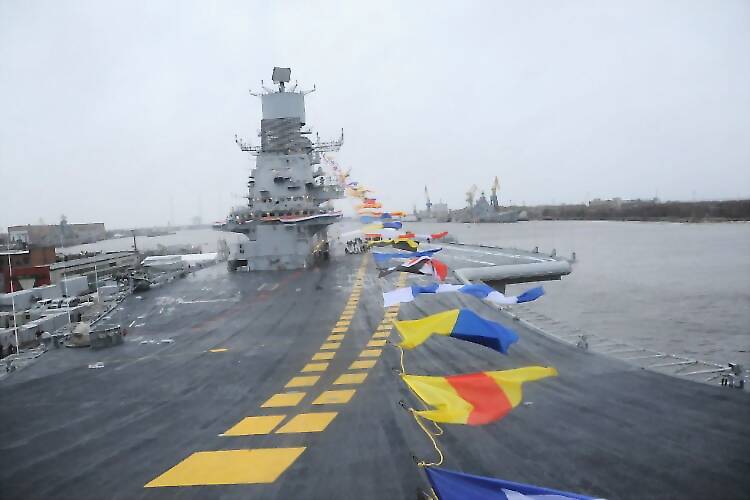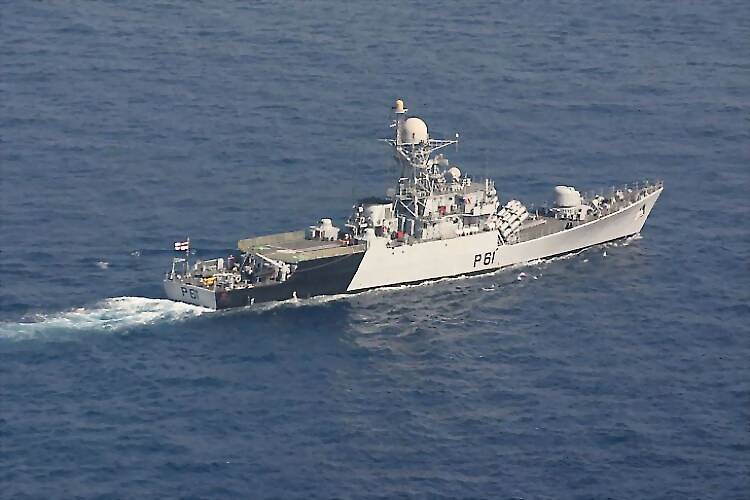
views
With the International Fleet Review (IFR) - 2016 scheduled from February 4 to February 8 in Vishakapatanam, IBNLive takes a look at the war waging capability of the Indian Navy. With Pakistan on the west and the ever expanding Chinese Navy flexing its muscles in the waters close to Indian coastline, the Indian Navy has an extremely important task of guarding the country and its economic interests.
Aircraft carriers: Indian Navy consists of two aircraft carriers which give the force blue water capabilities.
INS Vikramaditya is a floating airfield of the Indian Navy and has an overall length of about 284 meters. The maximum beam is about 60 meters, which is equal to the size of three football fields together. Standing about 20 storeys tall from keel to the highest point, the sheer sight of this 44,500 tonne mega structure of steel is awe inspiring. The ship has a total of 22 decks. With a speed of 30 knots per hour, the vessel is having four propellers.



The ship has the ability to carry over 30 aircraft comprising an assortment of MiG 29K/Sea Harrier, Kamov 31, Kamov 28, Sea King, ALH-Dhruv and Chetak helicopters. The MiG 29K swing role fighter is the main offensive platform and provides a quantum jump for the Indian Navy’s maritime strike capability.
The vessels are capable of operating up to a range of over 7,000 nautical miles or 13000 kms with more than 1,600 personnel on board.
An advanced sensors including fitment of Long range Air Surveillance Radars, Advanced Electronic Warfare Suite allow INS Vikramaditya to maintain a security cover over 500 kms around the ship.
She is loaded with the most prominent Resistor-E radar to assist short range navigation for ship borne aircraft.
INS Viraat is the British-built aircraft carrier, which was commissioned into the Royal Navy in 1957. It was inducted into the Indian Navy on May 12, 1987. Between 1987 and 1995, the warship served alongside INS Vikrant - India's first aircraft carrier. In Sanskrit language means 'Giant'. It is a Centaur class Aircraft Carrier. She is the oldest aircraft carrier in service in the world and is one of three carriers based in the Indian Ocean region.

It is fitted with a 12° ski jump to operate the Sea Harrier, a reinforced flight deck, and 1.2 inches of armour over the magazines and machinery spaces. The magazine capacity includes at least 80 lightweight torpedoes. The vessel retains commando transport capability for up to 750 troops and carries four Landing Craft Vehicle Personnel (LCVP) in the aft section. In crises, it can embark up to 26 combat aircraft. She is suited for two missions including supporting amphibious operations and conducting Anti-submarine warfare (ASW) operations.
Destroyers:
INS Delhi: The Delhi class destroyers are classified as guided-missile destroyers of the Indian Navy. Three ships of this class are in active service. It is third-largest warships to be fully designed and built in India, after the Kolkata-class destroyers and the Shivalik-class frigates. They will soon be superseded by the Kolkata class destroyers and the Vikrant class aircraft carrier. These ships have been built at Mazagon Dock Limited in Mumbai.

INS Kolkata: Kolkata class destroyers are follow-on of the legendary Project 15 ‘Delhi’ class destroyers which pressed in to service in late 1990s. The vessel was conceived and designed by the Indian Navy’s Directorate of Naval Design.
INS Rajput: Rajput class destroyers are also known as Kashin-II class. The ships were built in the former Soviet Union. These ships are the first ships in the Indian Navy to deploy the BrahMos supersonic cruise missile systems. The role of Rajput class ships involves protection such as anti-aircraft and anti-submarine warfare for carrier task force defense against submarines, low-flying aircraft, and cruise missiles.

Frigates:
INS Shivalik: It is a multi-role frigate and is the first-of-its kind warships built in India incorporating stealth features. The ships of this class have been built by Mazagon Dock Limited in Mumbai. The category - classification is named after the Indian Mountain Ranges by the name of 'Shivalik Hills'.

INS Talwar: The frigate was built in Russia under an Indo-Russian joint production. The Talwar class guided missile frigates are modified Krivak III class frigates from Russia. It has a displacement of 4,000 tons and speed of 30 knots and is capable of accomplishing a wide variety of naval missions. It can locate and eliminate enemy submarines and large surface ships. Due to the use of stealth technologies and a special hull design, the resulting frigate features reduced radar cross section (RCS) as well as electromagnetic, acoustic and infrared signatures.

INS Kamorta: INS Kamorta is first of the four ASW Stealth Corvettes designed by the Navy’s in-house organisation, the Directorate of Naval Design (DND). Measuring 110 meters in length, 14 meters in breadth and displacing 3500 tons, the ship can achieve speed of 25 Knots. The ship is fitted with Anti-submarine Rockets and Torpedoes, Medium and Close-in Weapon Systems and indigenous surveillance radar Revathi. The ship is also capable of carrying an integral Anti-submarine warfare (ASW) helicopter.
INS Brahmaputra: The Brahmaputra class frigates are the guided-missile frigates of the Indian Navy, designed and built in India. They have a displacement of 3850 tons and a length of 126 metres. Its armaments and capabilities are at par with the global warship standards. She was named after River Bhrahmaputra.

Corvettes:
INS Kora: Kora Class corvettes are 1350-ton guided-missile corvettes. Four vessels were built at Garden Reach Shipbuilders and Engineers (GRSE) and outfitted at Mazagon Dock Limited (MDL). Their primary role is as surface combatants.

INS Khukri: The Khukri class corvettes are equipped with Diesel Engines assembled in India, under license by Kirloskar Group. Around 65% of the ship contains indigenous parts.

INS Veer: INS Veer class corvettes meaning 'Brave' form the 22nd Killer Missile Vessel Squadron of Indian Navy. Eight vessels of this class inherit their names from the illustrious 25th Killer missile boat squadron, which attacked and sunk 2 destroyers, a minesweeper and various other support vessels off Karachi during Operation Trident and Operation Python of the Indo-Pakistani War of 1971.





















Comments
0 comment